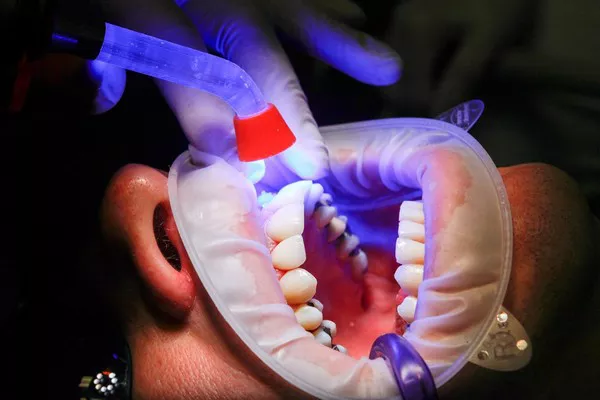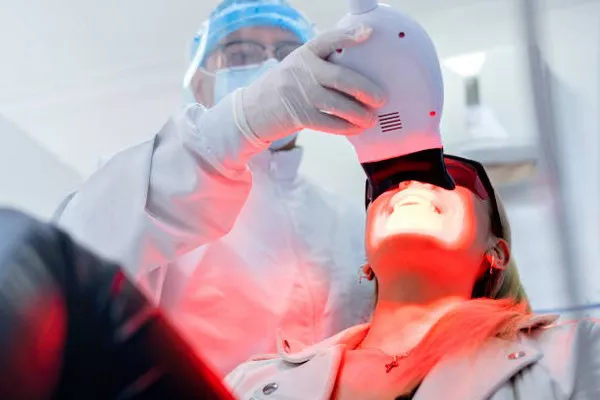Periodontal disease, often referred to as gum disease, is a common condition characterized by inflammation and infection of the gums and surrounding tissues. When left untreated, periodontal disease can progress to an advanced stage, leading to tooth loss and other serious complications. However, with timely intervention and proper management, it is possible to save teeth and restore oral health. Here’s everything you need to know about saving teeth with advanced periodontal disease.
Understanding Periodontal Disease
Periodontal disease begins as gingivitis, a mild form of gum disease characterized by red, swollen gums that may bleed easily during brushing or flossing. Without proper treatment, gingivitis can progress to periodontitis, an advanced stage of the disease where the infection spreads to the bone and tissues supporting the teeth. Common causes of periodontal disease include poor oral hygiene, smoking, genetic predisposition, hormonal changes, and certain medical conditions such as diabetes.
Symptoms and Diagnosis
Symptoms of advanced periodontal disease include persistent bad breath, swollen or receding gums, loose teeth, gum recession, and changes in the bite pattern. A professional diagnosis by a dentist or periodontist is essential to assess the severity of the disease and determine the most appropriate treatment plan. Diagnostic tools such as X-rays and periodontal probing help identify the extent of damage to the gums and surrounding structures.
Treatment Options
Treatment for advanced periodontal disease aims to eliminate infection, reduce inflammation, and restore the health of the gums and supporting tissues. Non-surgical treatments may include scaling and root planing, which involve deep cleaning of the teeth and roots to remove plaque and tartar buildup. Surgical options such as flap surgery, bone grafting, and tissue regeneration may be necessary for more severe cases where significant damage has occurred.
see also: Orthodontist & Periodontist: What Is The Difference
Importance of Early Intervention
Early intervention is critical in saving teeth with advanced periodontal disease. Timely treatment can halt the progression of the disease, preserve the bone and tissues supporting the teeth, and prevent tooth loss. Patients should seek professional care at the first sign of symptoms and adhere to their dentist’s recommendations for treatment and follow-up care.
Home Care Strategies
In addition to professional treatment, maintaining good oral hygiene at home is essential for managing advanced periodontal disease. Patients should brush their teeth twice a day with a soft-bristled toothbrush and fluoride toothpaste, paying special attention to the gumline and areas around the teeth. Flossing daily helps remove plaque and debris from between the teeth and along the gumline, while antiseptic mouthwash can help reduce bacteria levels and promote gum health.
Lifestyle Changes
Making lifestyle changes can also help manage advanced periodontal disease and improve overall oral health. Quitting smoking is especially important, as smoking is a significant risk factor for gum disease and can interfere with the body’s ability to heal. Improving nutrition by eating a balanced diet rich in fruits, vegetables, and whole grains can support gum health, while managing stress through relaxation techniques such as meditation or yoga can help reduce inflammation and promote healing.
see also: Can Kissing Cause Gingivitis
Regular Dental Visits
Regular dental check-ups and cleanings are essential for monitoring the condition of the gums and adjusting treatment as needed. During these visits, the dentist will assess the health of the gums, measure pocket depths, and check for signs of infection or inflammation. Professional cleanings help remove plaque and tartar buildup from hard-to-reach areas, reducing the risk of further damage to the gums and supporting tissues.
Potential Complications
Untreated periodontal disease can lead to serious complications, including tooth loss, gum recession, bone loss, and systemic health problems such as heart disease and diabetes. By addressing the disease early and following a comprehensive treatment plan, patients can reduce the risk of these complications and preserve their oral health.
Success Stories
Many patients have successfully managed their advanced periodontal disease and saved their teeth with proper treatment and ongoing care. Testimonials and case studies of individuals who have overcome gum disease can provide hope and encouragement to others facing similar challenges. These success stories underscore the importance of early intervention and adherence to treatment recommendations for achieving positive outcomes.
Long-Term Management
Periodontal disease is a chronic condition that requires ongoing care and maintenance to keep the teeth healthy over the long term. Patients should continue to follow good oral hygiene practices at home, attend regular dental check-ups, and make necessary lifestyle changes to support gum health. By staying proactive and vigilant, individuals can effectively manage their periodontal disease and enjoy a lifetime of healthy smiles.
Conclusion
Saving teeth with advanced periodontal disease is possible with timely intervention, proper treatment, and ongoing care. By understanding the nature of the disease, recognizing the symptoms, seeking professional diagnosis and treatment, maintaining good oral hygiene, making lifestyle changes, attending regular dental visits, being aware of potential complications, finding inspiration in success stories, and committing to long-term management, patients can preserve their teeth and enjoy optimal oral health for years to come. If you have any concerns about your gum health or are experiencing symptoms of periodontal disease, don’t hesitate to consult with your dentist or periodontist for personalized guidance and support.
You Might Be Interested In
































